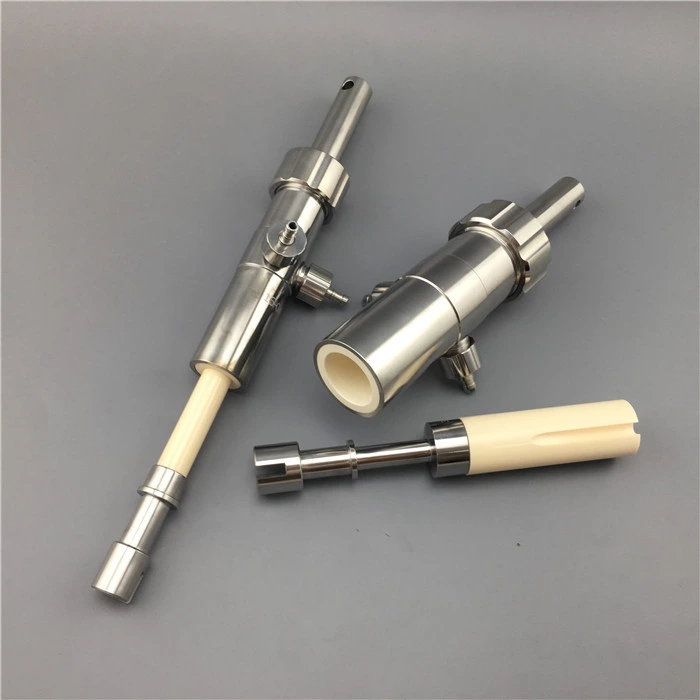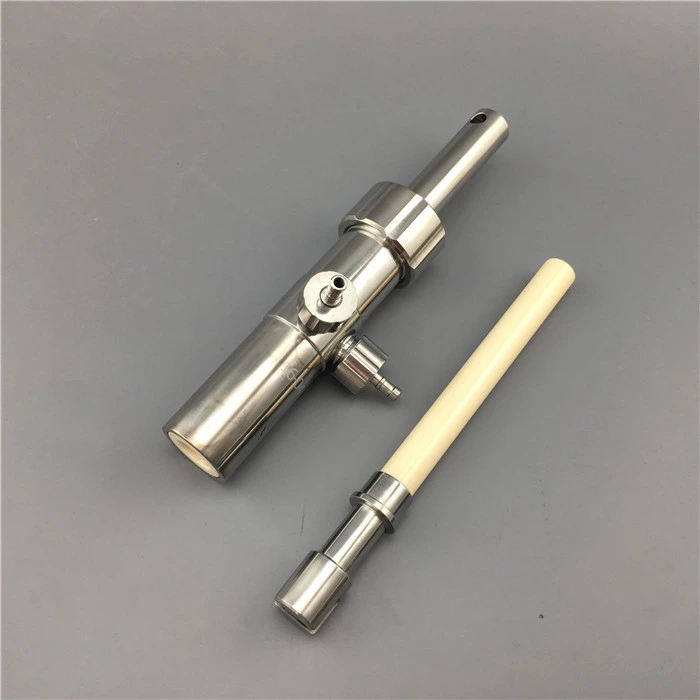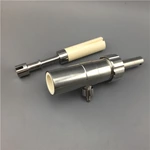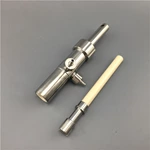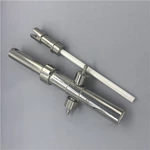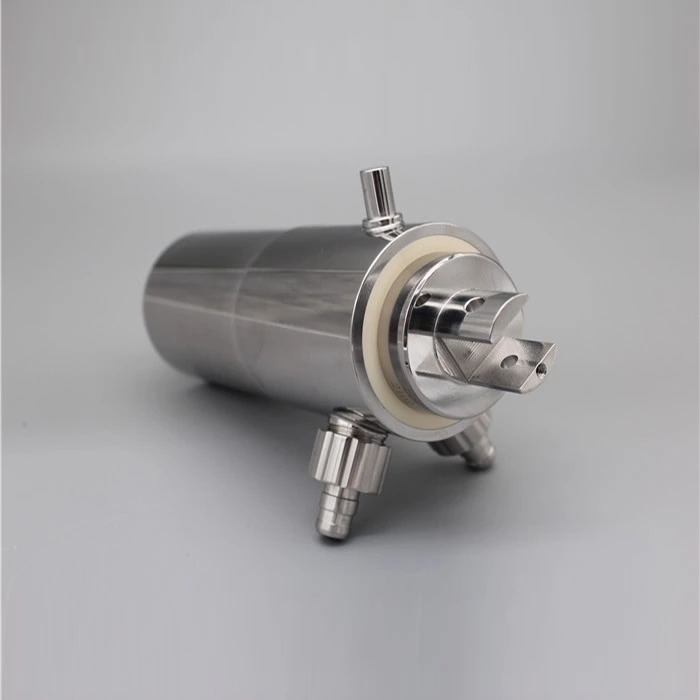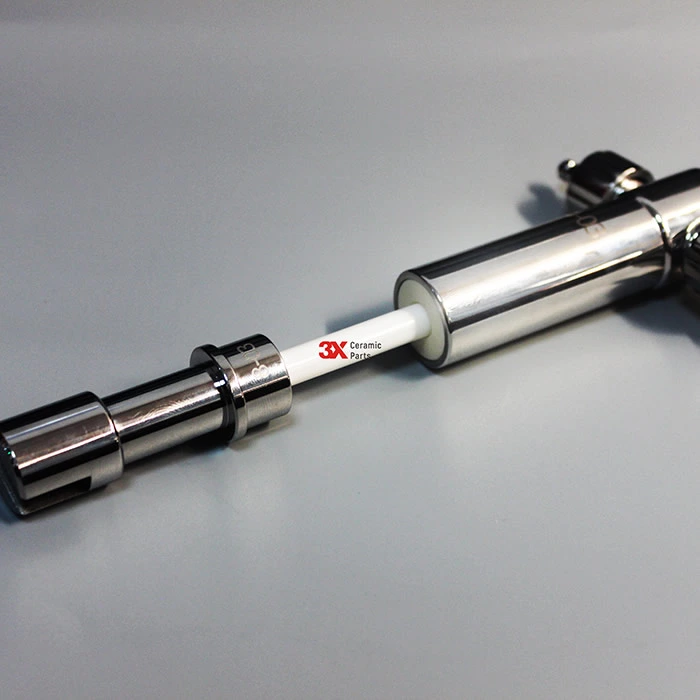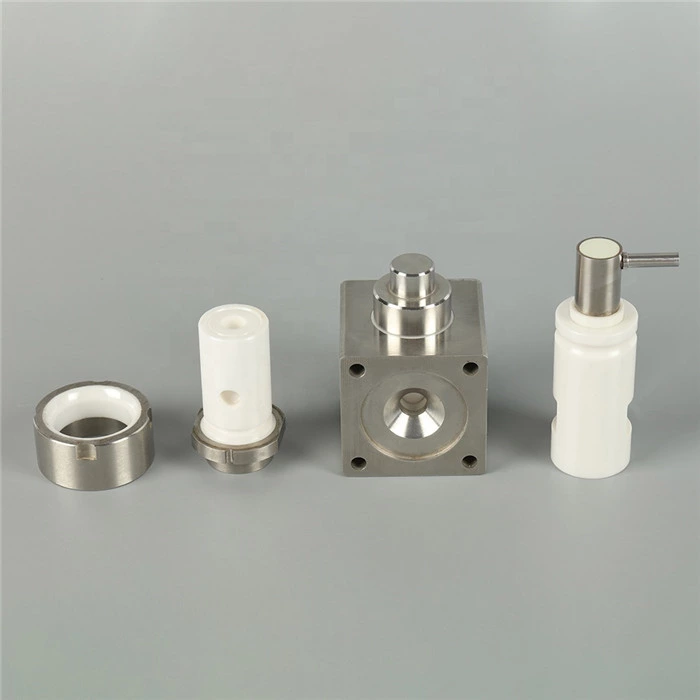Ceramic Metering Pump
- Brand Name
- 3X Ceramic Parts
- Material Type
- alumina ceramic + SS
- MOQ
- 1 set
- Specification
- custom make
- Application
- Phamaceutical filling , Cosmetic Industry , Food & Drink industry
- Main Property
- high precision filling
- Clearance
- 0.002mm
- Tolerance
- ±0.001mm
0.2ml~50ml Ceramic Rotary Valve Metering Pump
Technical indexes of ceramic filling metering pump
1. Loading range: 0.2-50ml;
2. Service temperature: 10 ~ 40 ℃;
3. Filling accuracy standard: when the filling volume is less than 2ml, the upper and lower deviation shall not exceed ± 1%; When the filling volume is > 2ml, the upper and lower deviation shall not exceed ± 0.5%.
Before leaving the factory, the product has been air tight tested and loaded on the filling machine for filling accuracy test: the accuracy test method uses drinking purified water as the medium and adopts the weight measurement method to calculate the average value, upper deviation and lower deviation.
Structure and principle
1. The ceramic filling metering pump is composed of ceramic metering parts (ceramic pump sleeve, rotary valve, metering rod), stainless steel inlet and outlet nozzles and connectors.
2. Working principle of ceramic filling metering pump:
(1) the port of the rotary valve is aligned with the liquid inlet and the downward linear movement of the ceramic column to generate negative pressure and suck in liquid;
(2) the port of the rotary valve is aligned with the liquid outlet, and the upward linear movement of the ceramic column produces positive pressure and discharges the liquid.
Assembly of ceramic pump and connection with filling machine
1. Because the ceramic rod and the ceramic sleeve are precision mating parts, the gap is very small and cannot be interchanged; The products have been numbered before leaving the factory, and shall not be exchanged during cleaning and assembly.
2. Before installation, ensure that all sealing parts are installed in place without leakage.
3. The assembly clearance with all parts of the filling machine must be eliminated (the assembly clearance leads to stroke change, resulting in inaccurate measurement), and the coaxiality of moving parts must be guaranteed (affecting the service life and loading accuracy of the pump).
Cleaning and sterilization
1. Cleaning procedure:
After cleaning with purified water, rinse with water for injection;
When it is placed for a long time and used for the first time, remove the pyrogen and soak it in 1 ~ 2% NaOH for 30 minutes. Be careful not to use hot alkaline solution (the temperature shall not be higher than 40 ℃), and the soaking time of sealing ring with alkaline solution shall not be too long, otherwise the elasticity will become poor.
2. Sterilization procedure:
Dry heat sterilization or high-pressure damp heat steam sterilization can be adopted: however, since the sealing ring can only withstand 160 ℃, the sealing ring shall be removed before dry heat and sterilized by high-pressure damp heat steam. (it is recommended to use high-pressure damp heat steam for sterilization, with sterilization temperature of 121 ℃, pressure of 0.1MPa and time of 30 minutes).
3. Precautions for cleaning and sterilization:
(1) chemical solution containing chlorine shall not be used to contact with stainless steel to prevent corrosion of stainless steel parts.
(2) during cleaning, do not pull the ceramic metering parts in hot water exceeding 40 ℃. The ceramic plunger and ceramic sleeve shall be cleaned separately.
(3) during sterilization, the rotary valve, ceramic sleeve and measuring rod shall be opened in a special sterilization box, and the ceramic rod and ceramic sleeve shall be hung vertically for damp heat sterilization to prevent deformation and bending due to heating; After sterilization, the installation operation can be carried out only when the temperature of each part naturally drops to room temperature. Before the temperature of the pump body drops to room temperature, the damage of each part caused by sudden cooling shall be avoided.
(4) since the hardness of ceramic is greater than that of metal, the contact between ceramic and metal can make the ceramic surface dirty. A small amount of concentrated sulfuric acid (hydrochloric acid) can be used for cleaning; If there is yellow dirt on the pump body, soak it in 10% oxalic acid for 5-10 minutes, and then rinse it with injection water.
(5) since the hardness of ceramic is greater than that of stainless steel, the contact between ceramic and stainless steel can make the ceramic surface adhere to stainless steel and can not be removed, which may lead to poor operation or movement of filling pump. Cause damage. It is recommended to use non-metallic materials as storage containers during cleaning and sterilization.



